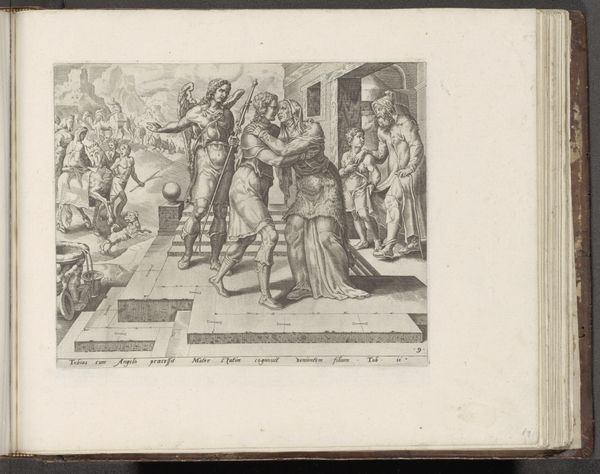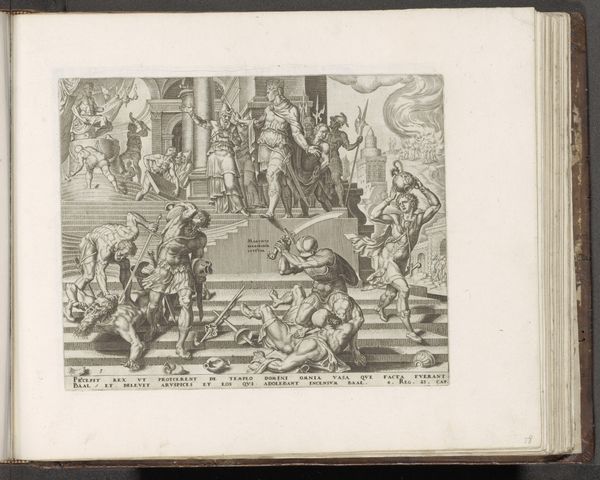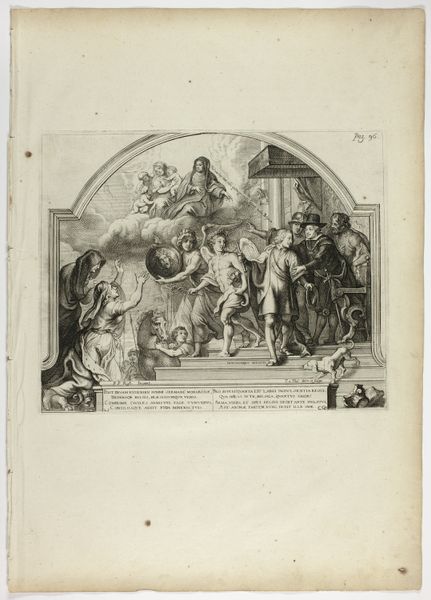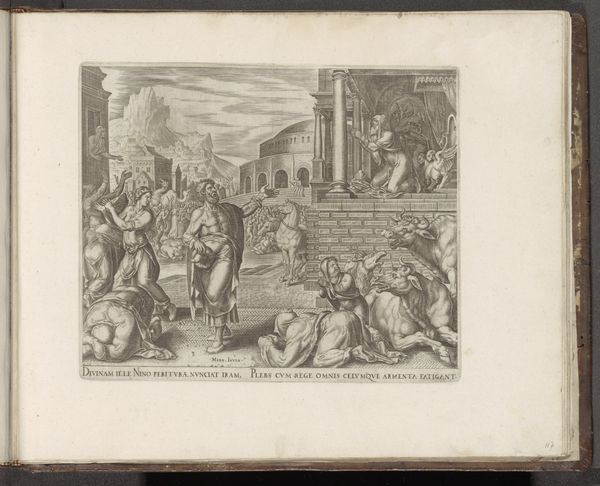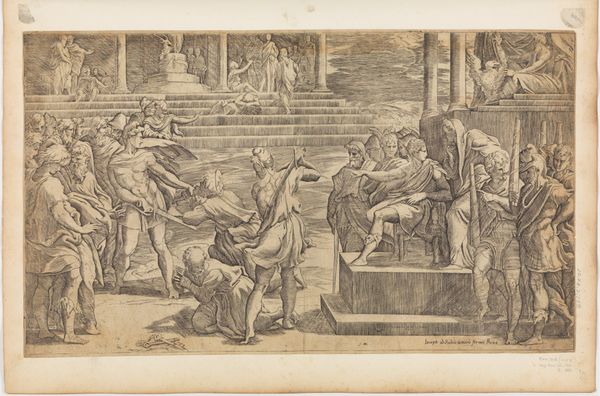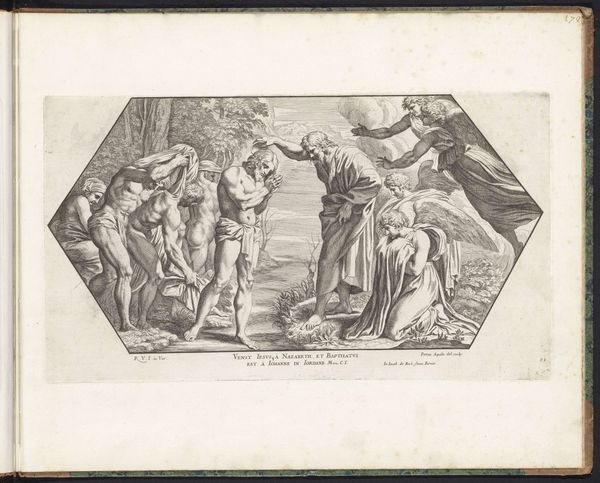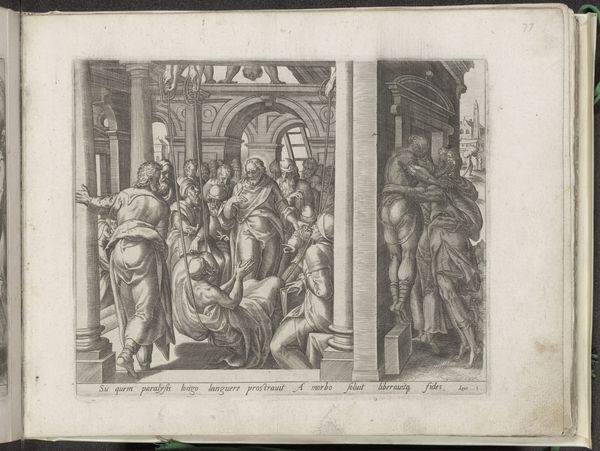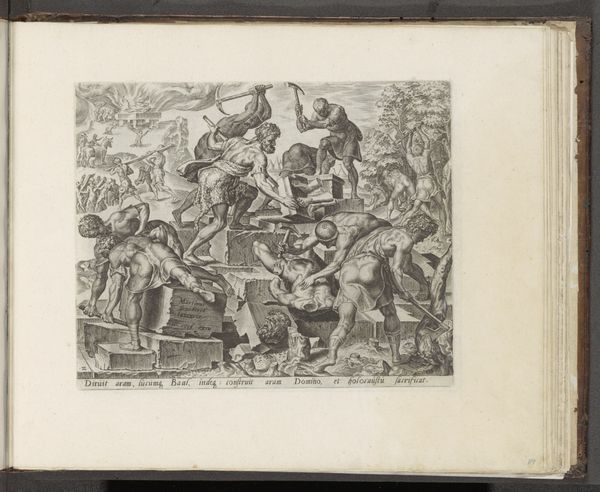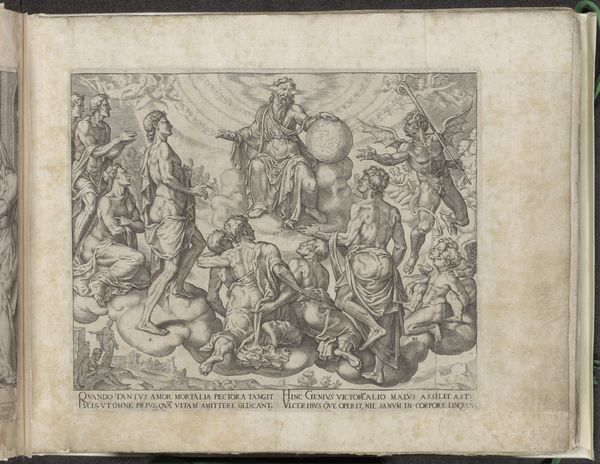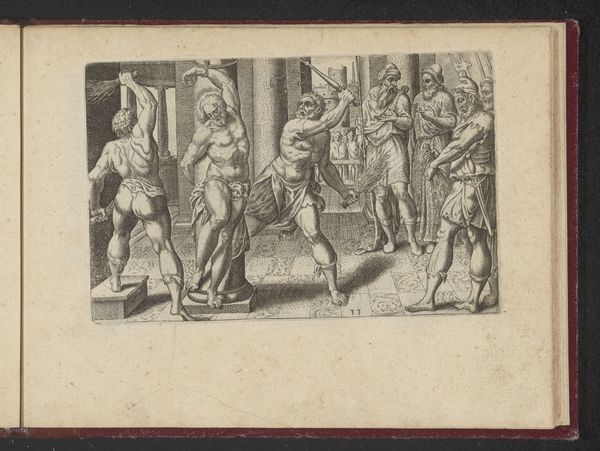
print, engraving
#
aged paper
#
toned paper
#
baroque
# print
#
figuration
#
classicism
#
history-painting
#
engraving
Dimensions: 5 1/8 x 9 in. (13.02 x 22.86 cm) (sheet)9 3/16 x 11 7/8 in. (23.34 x 30.16 cm) (mount)14 1/16 x 18 1/16 in. (35.72 x 45.88 cm) (mat)
Copyright: Public Domain
Editor: This is Cherubino Alberti's "Perseus with the Head of Medusa," an engraving from the 16th or 17th century. The detail is incredible, and the scene is very active and violent. What strikes me is the power dynamic—Perseus standing triumphant. How do you interpret this work? Curator: This piece makes me think about the narratives we build around power and heroism. We see Perseus celebrated, but what about Medusa? Viewed through a feminist lens, she’s often depicted as a monster, her story twisted to justify male dominance. Editor: So, you see this piece as potentially problematic, reinforcing a biased narrative? Curator: Exactly. Alberti's work, while technically impressive, perpetuates a historical silencing. Consider how Medusa’s gaze—her power—was feared and demonized. Was she truly a monster, or a woman punished and vilified for being powerful in a patriarchal society? Editor: That’s a perspective I hadn't considered. The composition almost glorifies the act, rather than questioning it. Curator: Precisely. The classicism evident in the style, combined with the Baroque dynamism, masks a deeper, more unsettling narrative. Whose story are we celebrating, and at whose expense? Editor: I see what you mean. By focusing solely on Perseus's victory, we ignore the potential tragedy and injustice in Medusa's fate. Curator: And how those power dynamics continue to resonate today in how we portray and perceive women, especially powerful or unconventional women. Editor: This has given me a lot to think about. I now understand how one can view a piece from a completely different point of view when considering social issues. Curator: That’s the value of art: to spark dialogue about issues relevant to ourselves.
Comments
No comments
Be the first to comment and join the conversation on the ultimate creative platform.

